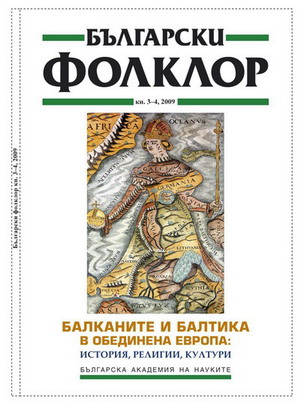Кръстовите дървета в естонския пейзаж
Cross-Trees in Estonian Landscape
Author(s): Marju KõivupuuSubject(s): Customs / Folklore
Published by: Институт за етнология и фолклористика с Етнографски музей при БАН
Summary/Abstract: A cross-tree (a cross-spruce, -pine, -birch) is a big tree at a (cross) road or in a cross-forest, into which the dead person’s godsons or closest male relatives cut a cross on the way to the graveyard. Earliest reports of cross-trees or their analogues in Estonia date to the 17th century (Brand 1693; Olearius 1647). In addition to South-Estonia, the tradition has thrived in western Saaremaa Island up to the 1940s, and analogous phenomena are found in the funeral customs of Russian Orthodox Setus. Cutting crosses coming from the graveyard was a tradition also known in North-Latvia, in Finland etc. The phenomenon of the cross-trees has conserved both concepts of the tree as the residence of the soul; today, they are unique in the whole Europe if not the whole world. Choice of the location of cross-trees depends on the particular landscape, but generally it marks a conscious or unconscious border, where the relatives bid final farewell to the deceased; since the deceased is excepted from among the living people. Cross-forests (coniferous or mixed forests) are situated either in the immediate vicinity of the graveyard or on sc. church-roads – in a grove between the village and the graveyard. The Soviet period functioned as a factor conducive to the preservation of the tradition of cross-cutting as social changes in society had disrupted the former way of life in the village community. If possible, the cross was cut on the border of some farm expropriated by the Soviet authorities. By doing so, ancient traditions were honored and protest was expressed against the violent and alien social order. The practice of cross-cutting was not limited to Lutherans living in rural areas. Whether a person was baptized and a member of a congregation was insignificant in the given context because during the Soviet period people’s normal relations with the church had been severed. Cutting the cross was even regarded as compensation for the absence of the clerical ceremony, even more so because atheist schoolteachers, party secretaries, and other functionaries who had moved in from elsewhere showed a negative attitude to it. Older local pastors, generally, have a neutral attitude to cross-cutting and participate in the ceremony themselves, motivating their behavior by local customs and respect for the wishes of the deceased. My article concentrates on: 1) Belief narrative tradition connected with cross-trees and belief narrative traditions as an important factor preserving the cross-trees tradition in nowadays Southern Estonia funeral custom tradition; 2) Cross-trees as sacred trees which are in need of protection in post-socialist Estonia, where landscape is being actively transformed into urban or artificial landscape.
Journal: Български фолклор
- Issue Year: XXXV/2009
- Issue No: 3-4
- Page Range: 016-023
- Page Count: 8
- Language: Bulgarian
- Content File-PDF

